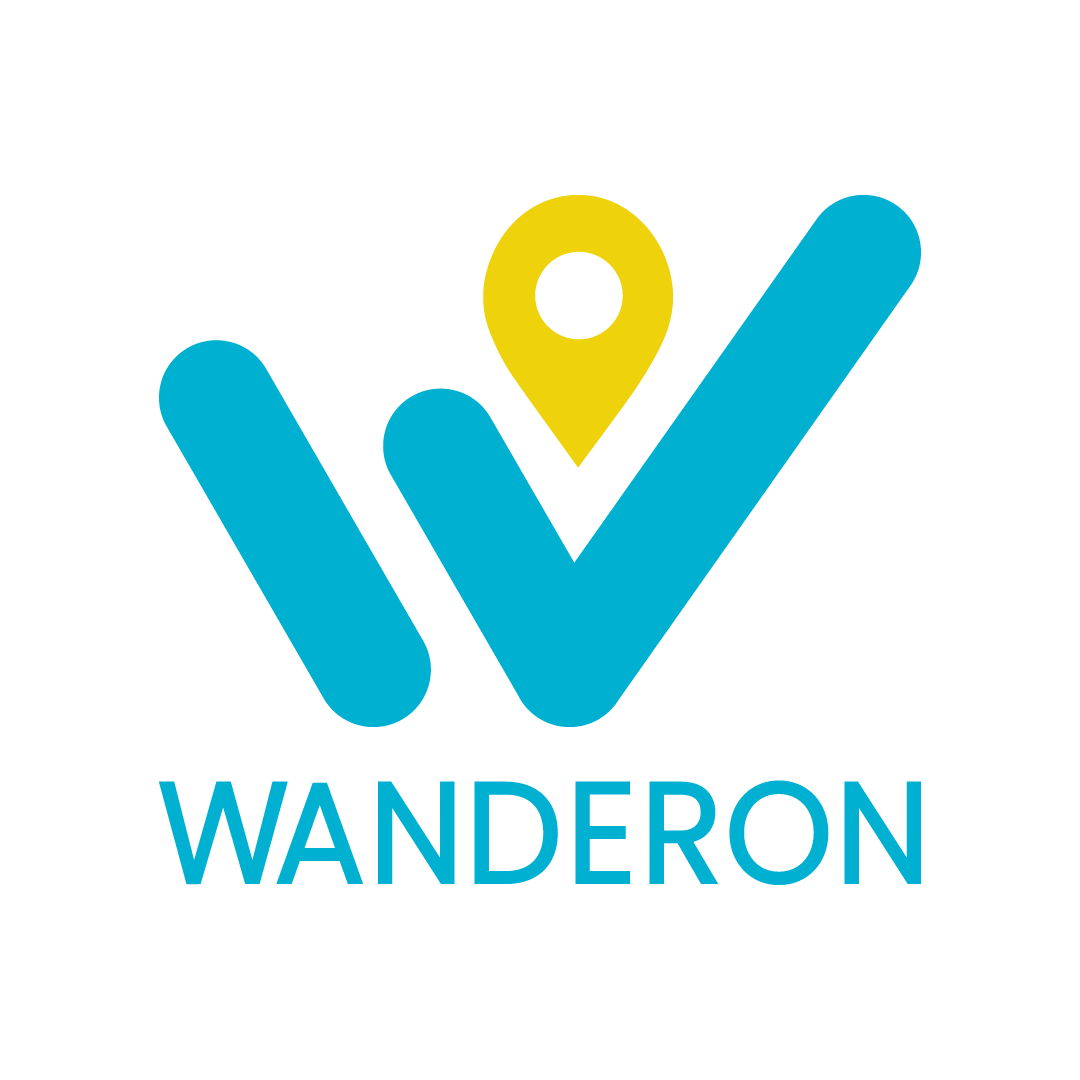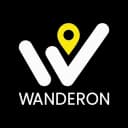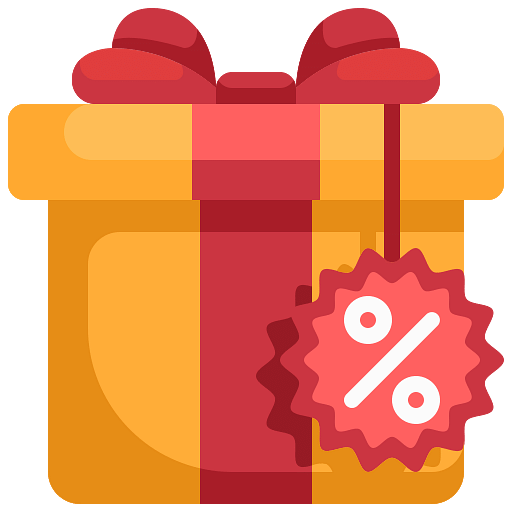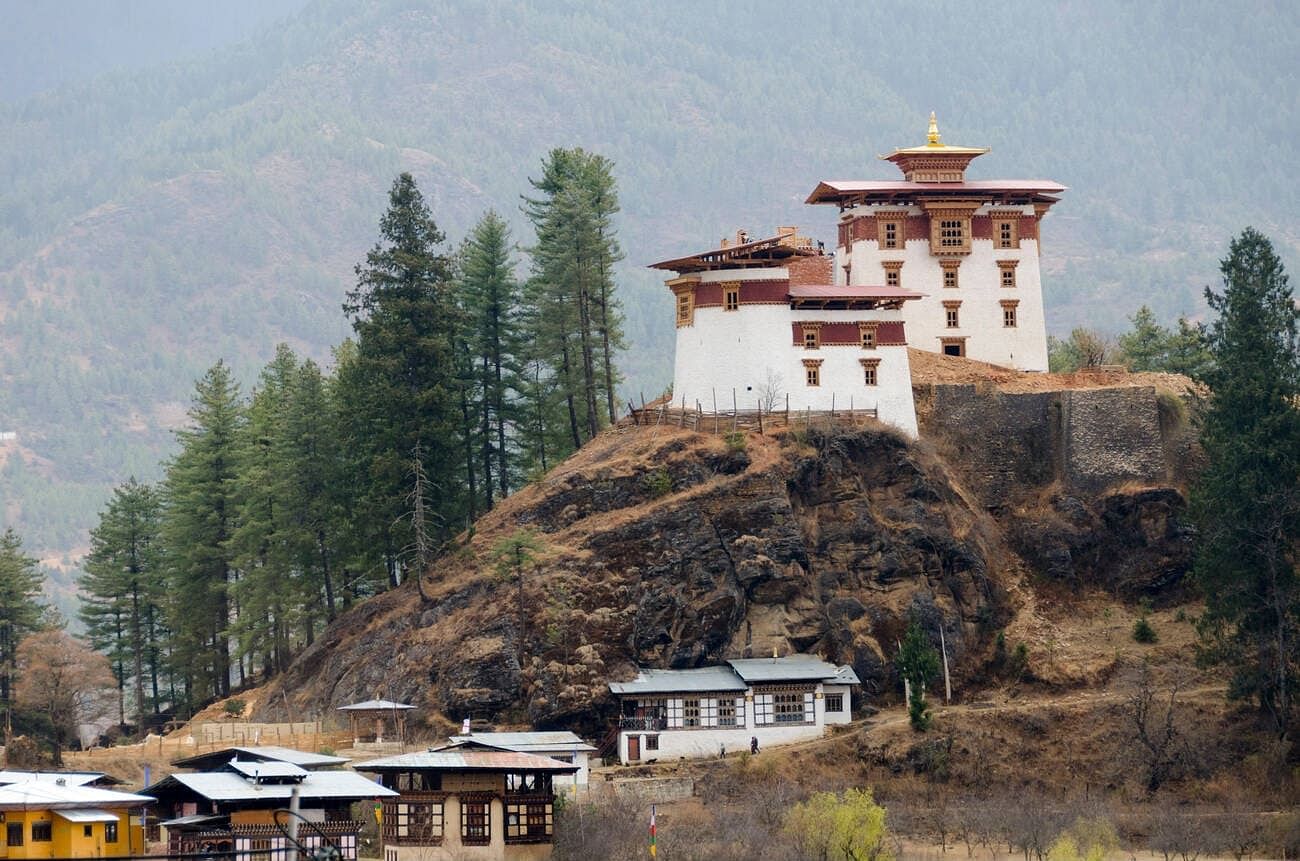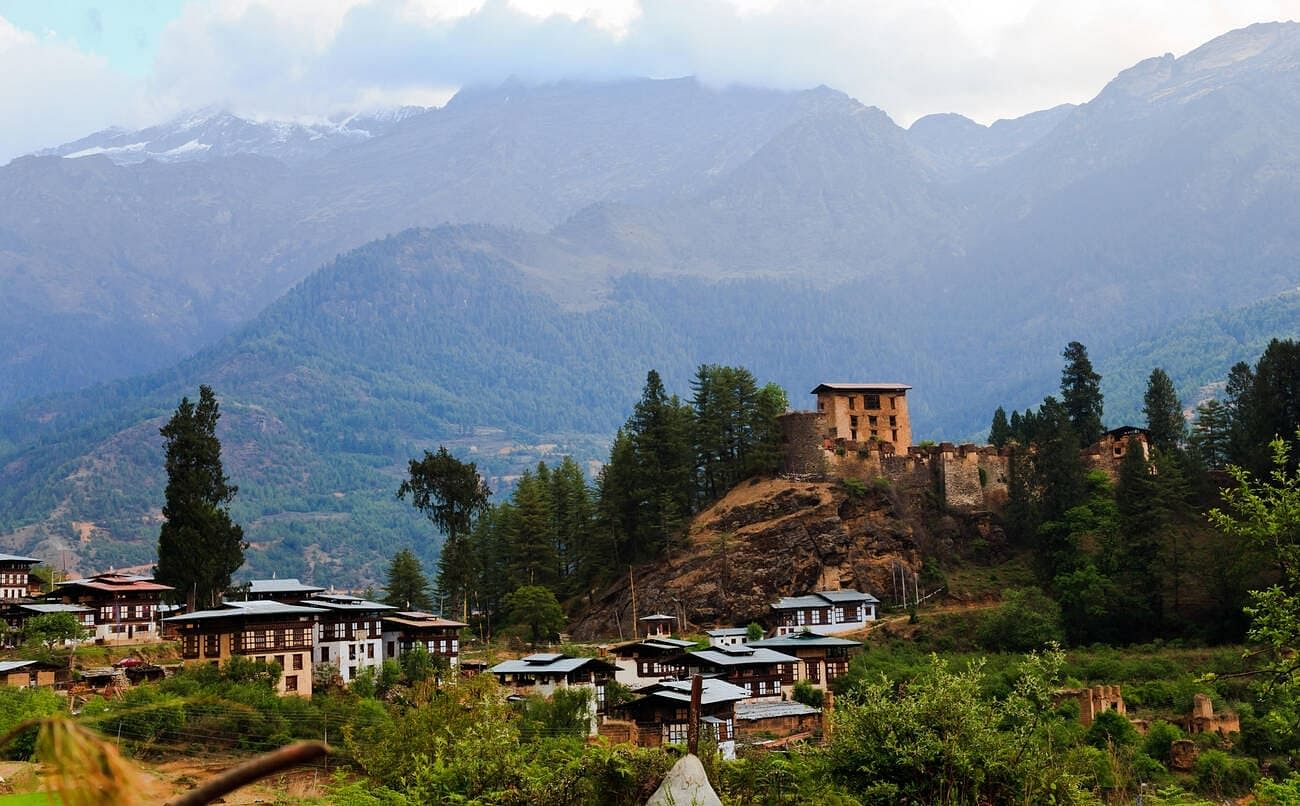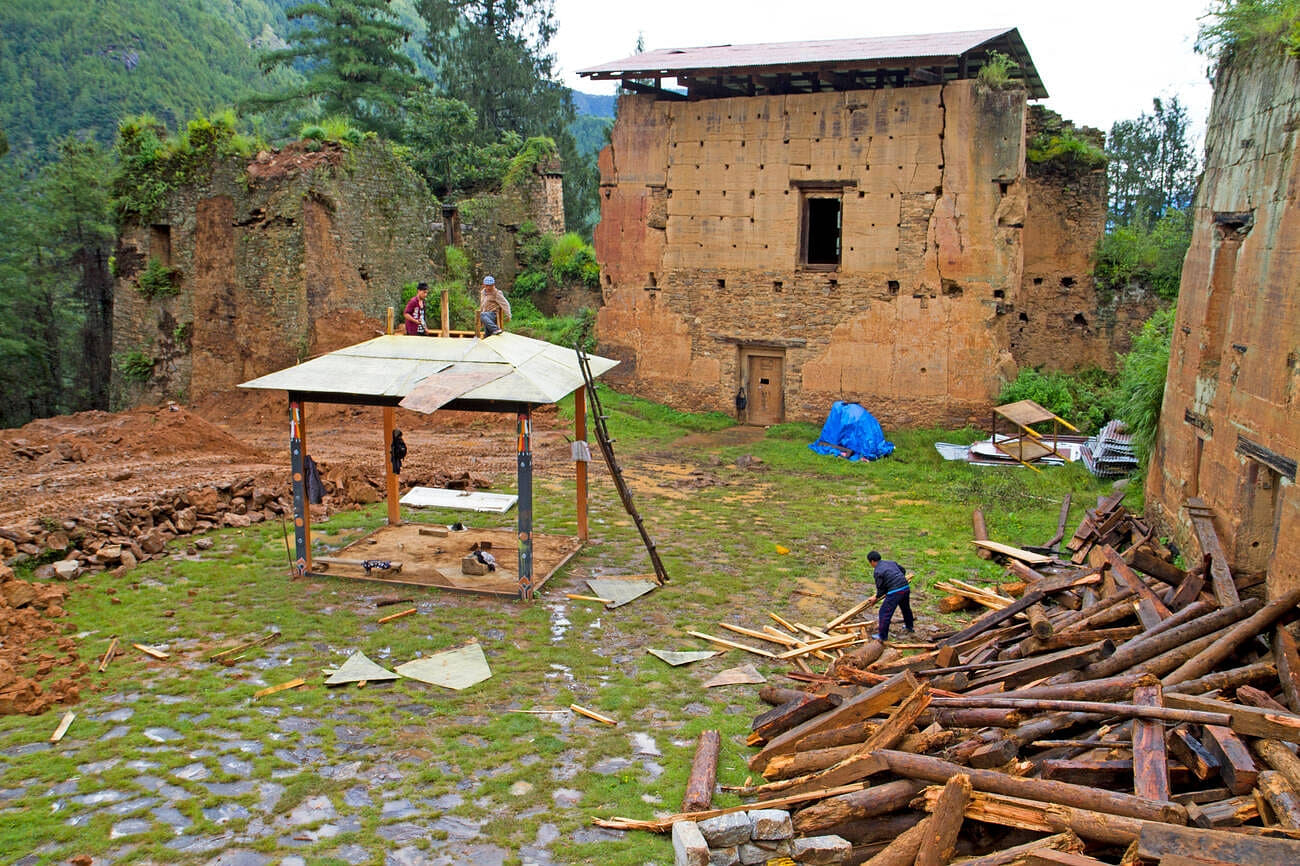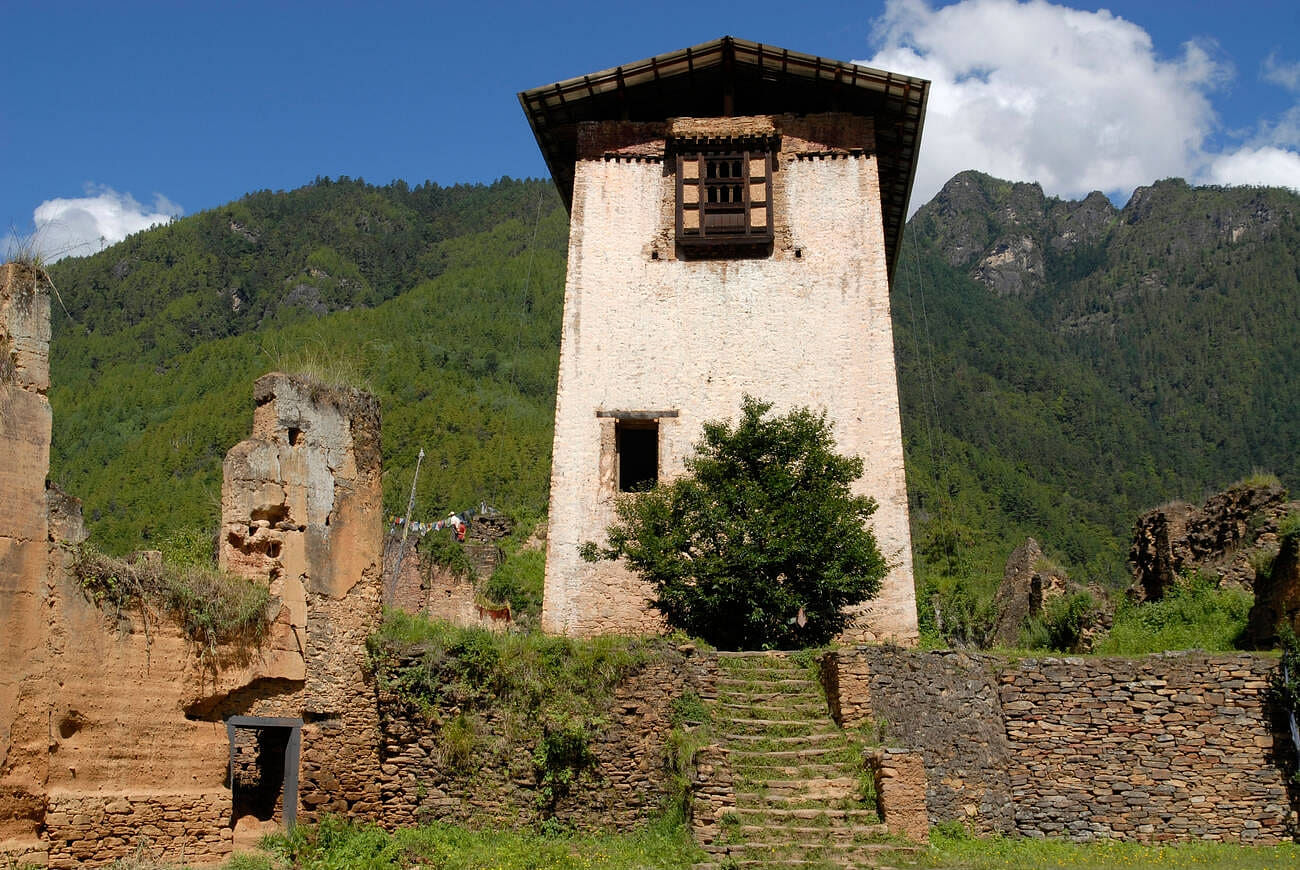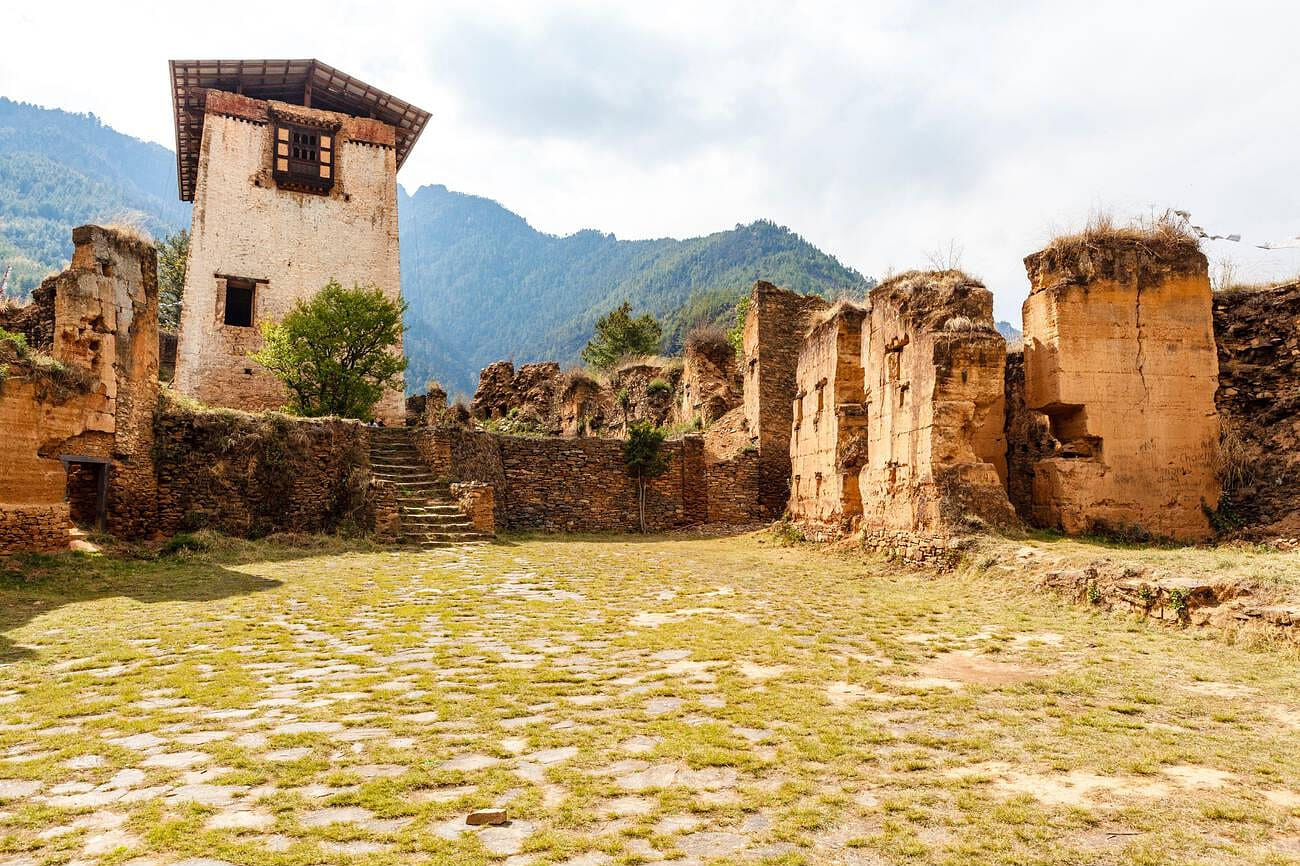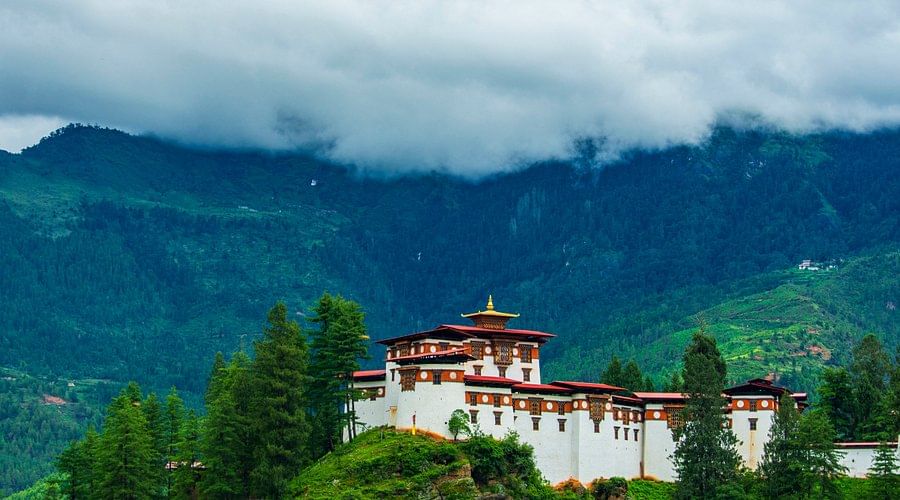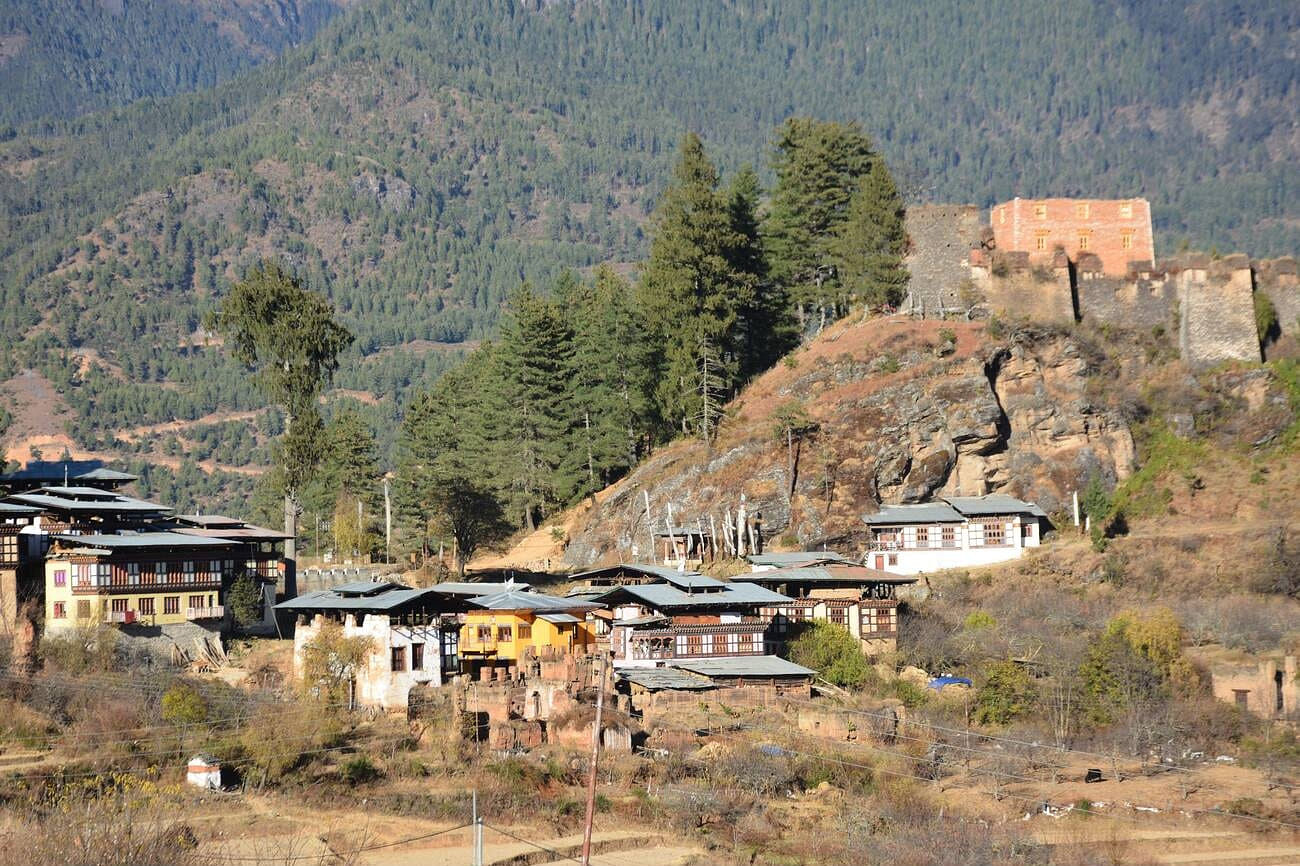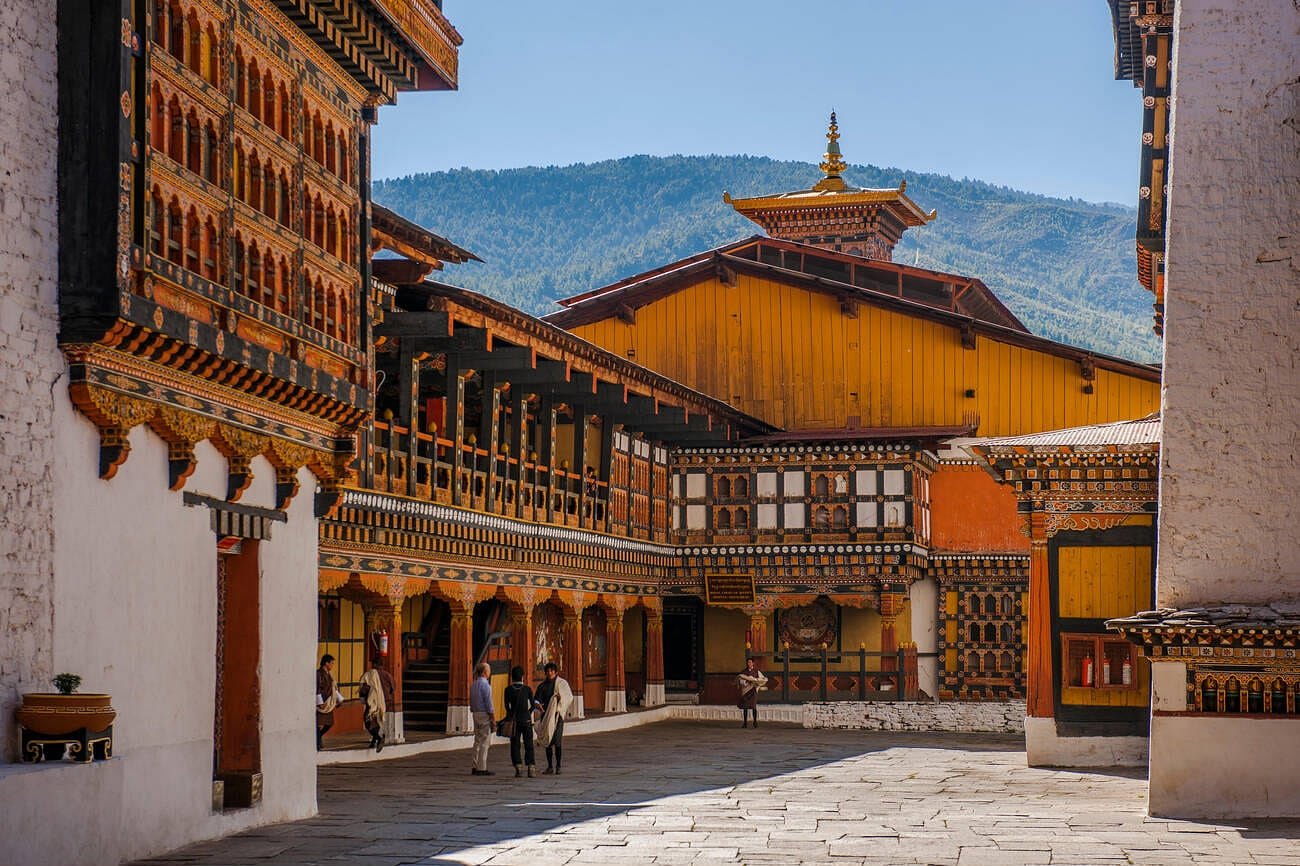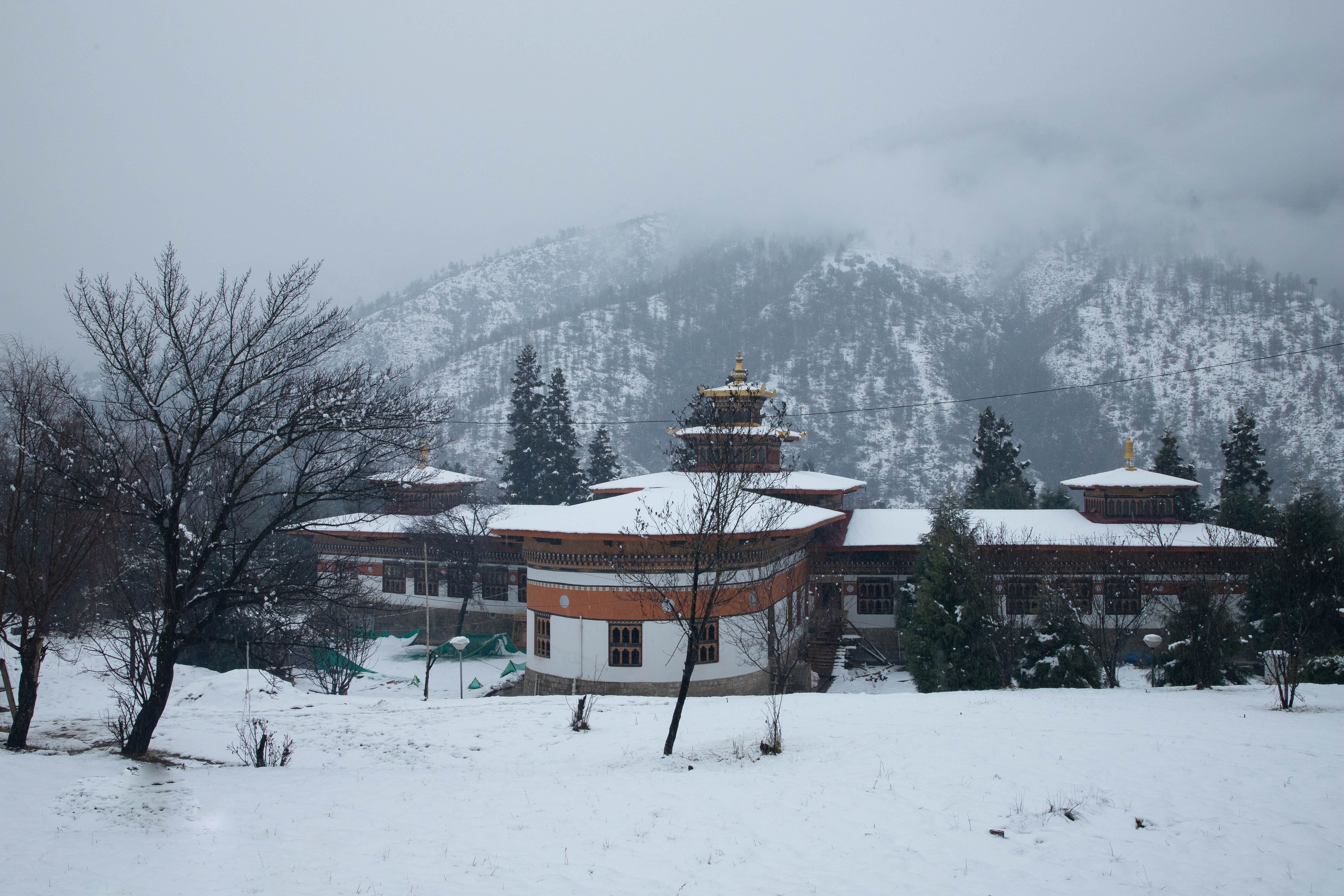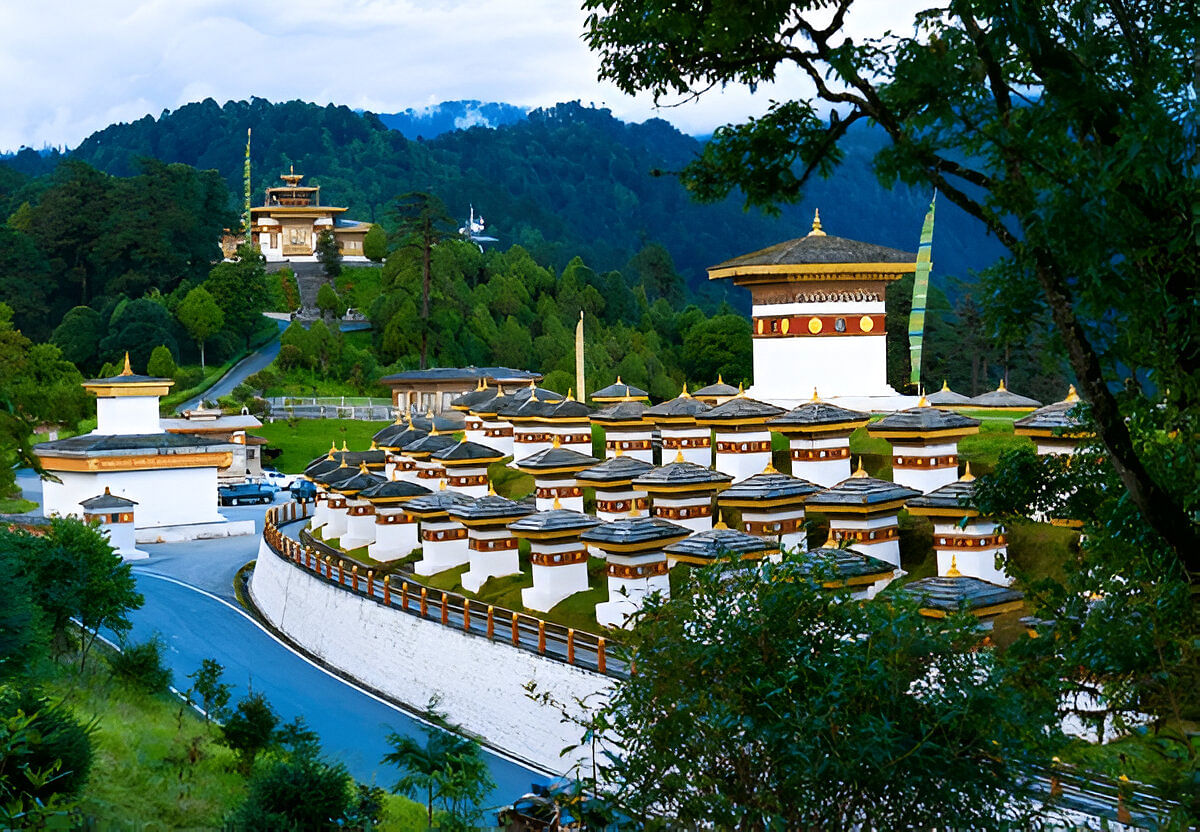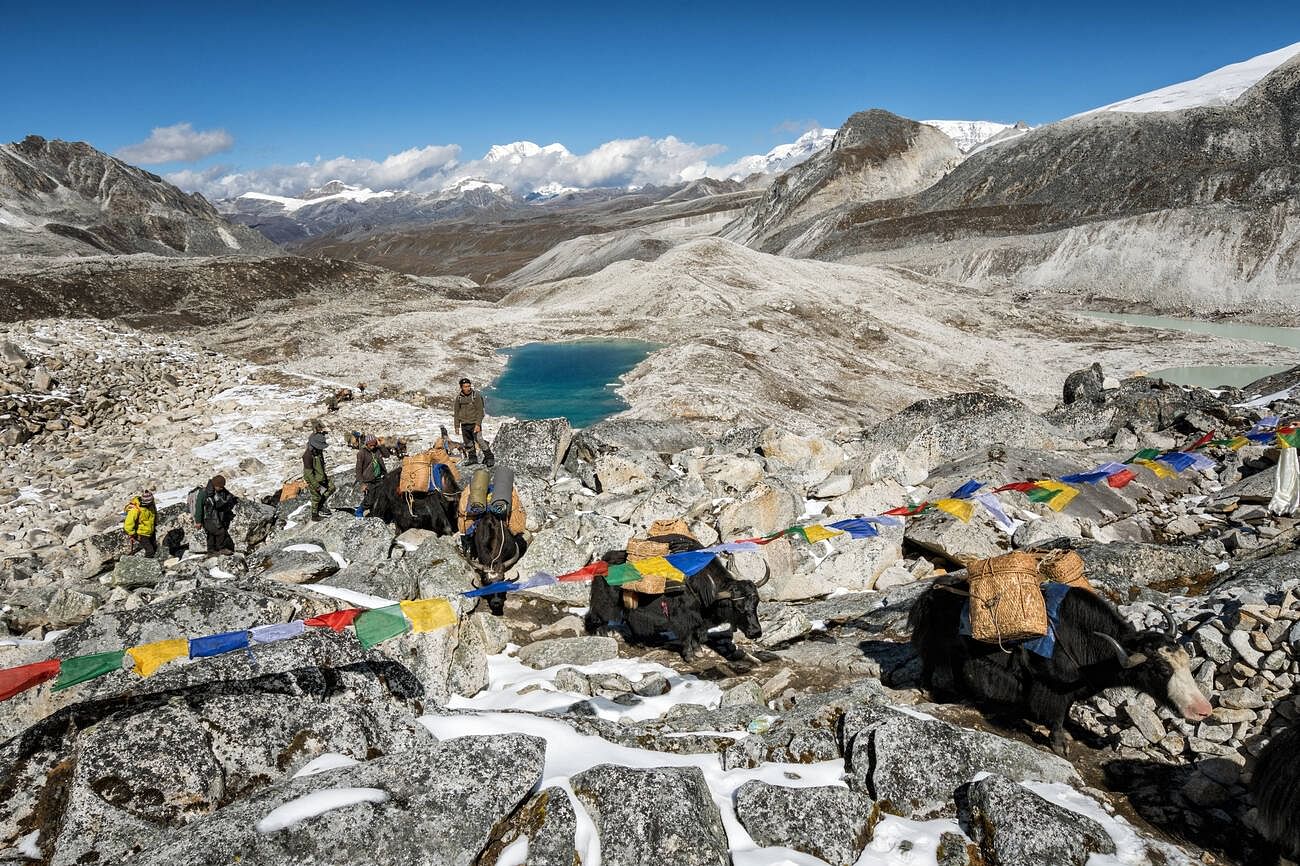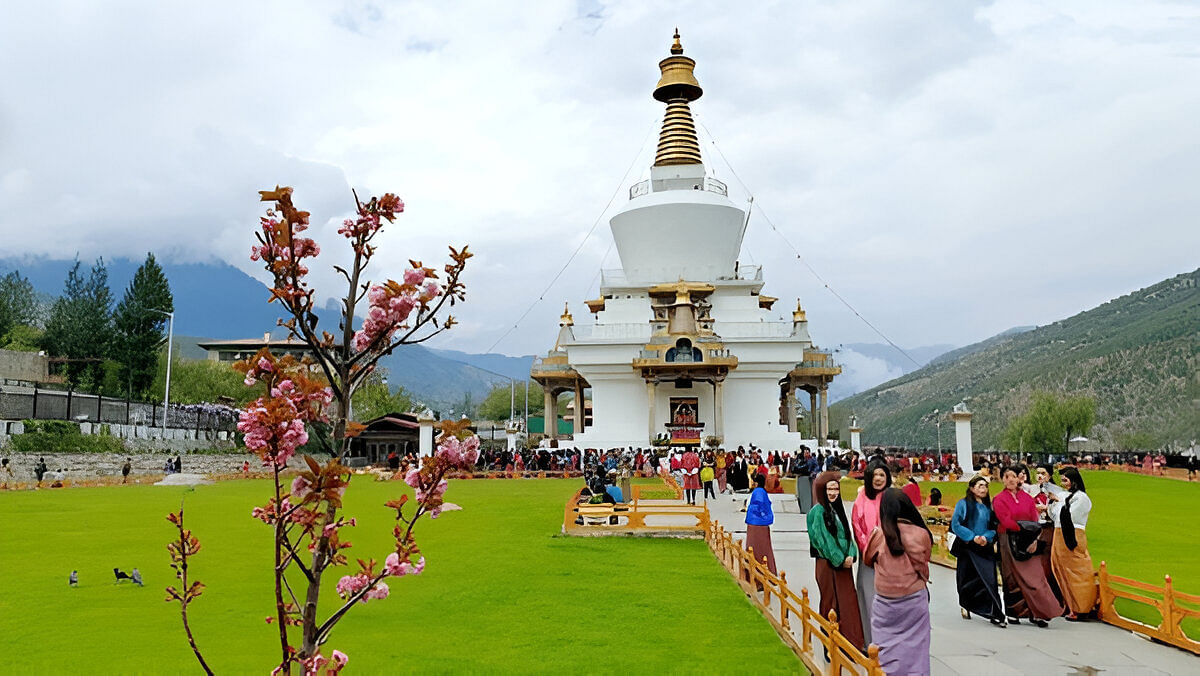Ever been curious about what it's like to walk through an actual Game of Thrones set? Welcome to Drukgyel Dzong, where battles truly raged and the ghosts likely have better material than any Netflix show.
Way back in 1649, this fortress was essentially Bhutan's mic drop. After sending the Tibetan invaders packing, they constructed Drukgyel Dzong – literally, "Ha! We won!" (okay, more like "victorious Drukpa," but you feel me). What a celebration of ultimate victory in stone.
This decayed treasure is 14 kilometres from Paro, and believe me, it's worth a bumpy ride. When the weather deities are kind, Mount Jomolhari peeps out from behind the ruins to create those awe-filled moments that will set your camera working overtime.
Okay, a huge fire in 1951 did make it beautiful ruins, but come on? It just makes the entire location all the more enigmatically hip. You'll be sneaking down ancient hallways, half-expecting a monk to suddenly appear and dish some 400-year-old secrets.
It's a real must-see among places to visit in Paro – the sort of place that makes you feel like a time-travelling adventurer. Ready to script your own adventure tale? Our Bhutan Tour Packages are your golden ticket to these unforgettable moments!
A Glimpse into Drukgyel Dzong History
Drukgyel Dzong history begins in 1649 when Tenzin Drukdra constructed this fortress at the instruction of Zhabdrong Ngawang Namgyal in honour of the triumph of Bhutan over the invading forces of Tibet. This is why the place is translated to the Fortress of the successful Drukpas. It was a proud fortress that took centuries to become a place of defence and survival.
Alas! In the early fifties, a terrible fire destroyed most of it. The timber - doors, beams, roof trusses, most of them were destroyed. But somehow the stone walls and architecture have stood the test of time, leaving a remnant of what was once a powerful fortification.
Despite that fire, and nowadays, the importance of Drukgyel Dzong is enormous. It is a heritage site and a monument of cultural strength and architecture, listed as one of the UNESCO tentative sites in Bhutan.
The question is: so what is the actual importance of Drukgyel Dzong? It's not just an old ruin. It has a history that was hewn into the hills, something to remember of group pride, and a moment to be silent. Located in the context of the Himalayas, and Mount Chomolhari in particular, the location is one that provides not only visual wonderment, but a spiritual rest.
Facts to know about Drukgyal Dzong
Here are some cool facts to know about Drukgyal Dzong before you go:
- Constructed in 1649, Drukgyel Dzong is the original architecture of the Drukgyel Dzong that was commissioned by Zhabdrong Ngawang Namgyal and constructed by Tenzin Drukdra. It was the military success of Bhutan over the Tibetans.
- Signification of the name - The name means Fortress of the Successful Drukpas. It is literally a fortress that has been constructed to commemorate a victory.
- Purpose - This was not a civilian dzong, as many of the others in Bhutan were. Other sources point out that it was only defensive and was not a monastery or administrative centre.
- The 1951 fire - A massive unintentional fire engulfed the entire wooden interior, that is, beams, doors and roofs, leaving only stone walls and foundations.
- Maintained ruins - In ruins, the outer walls, towers, and courtyards remain, which allows the visitors to have a clear impression of how it was originally laid out in terms of defence.
- UNESCO Tentative List - Since 2012, Drukgyel Dzong has been listed tentatively on the World Heritage list under the name Ancient Ruin of Drukgyel Dzong.
- Location - It is located at an approximate distance of 14-16km north of Paro town, and on a clear day, you may view the mountain Jomolhari when there.
- Possible tunnels - Local records record tunnels being used to bring water and supplies in times of siege, but many of these are now sealed up.
Best Time to Visit Drukgyel Dzong
If you’re wondering about the best time to visit Drukgyel Dzong Drukgyel Dzong, here’s what recent travel data suggest:
- Spring (March–May) and Autumn (September–November) are generally considered ideal, with clear skies, mild air, and brilliant visibility.
- Some sources note winter (October–March) as another great window, especially for views of Jomolhari-though it gets colder.
So, if you ask, “When’s the Best Time To Visit Drukgyel Dzong?”-aim for early spring or autumn if you can. The air is clearer, the days feel brighter, and you’ll have more peace on the path.
Is there a Drukgyel Dzong entry fee?
Now to the practical bit. Tourists frequently ask about the Drukgyel Dzong entry fee. As of 2025, the good news is: it's free! There is no need to empty your pockets to be able to walk around and visit the ruins of the fortress.
Do be aware, however, that there are also places that might not be open, in case of restoration work. In 2016, the government of Bhutan began the restoration of the dzong 2016 to celebrate the 400th anniversary of the arrival of Zhabdrung and the birth of the Crown Prince. By 2022, approximately 90 per cent of the job had been accomplished. There may still be sections of the site that are in repair even today.
Therefore, no drukgyel dzong entry fee, but it is best to confirm with the tour guide or the local authorities whether any restrictions are imposed.
How to Reach Drukgyel Dzong
Getting to Drukgyel Dzong is an adventure worth savouring-it’s about the journey as much as the destination.
1. Starting from Paro Airport (Paro International Airport)
Most visitors land at Paro Airport, Bhutan’s only international airport, nestled in a deep valley surrounded by towering peaks. From the airport, you’ll head toward Paro town, just about 6 km away-a quick ride that gives you your first glimpse of the valley’s serene beauty.
2. By Car or Taxi (Fastest & Easiest)
Hiring a car or taxi is the simplest-this is the most common way to reach Drukgyel Dzong:
- The drive from Paro town takes about 25 to 40 minutes, depending on traffic and road conditions.
- The route follows the bendy Paro–Thimphu Highway, then branches off toward Drukgyel Dzong about 14–16 km from Paro’s centre.
- Along the way, you’ll pass charming villages, terraced fields, and views of the Paro Chhu river carved into the valley-it's scenic, peaceful, and rewarding.
3. By Local Bus (Budget-Friendly Option)
Prefer public transport? Local buses from Paro town run regularly toward Drukgyel Dzong:
- The ride takes approximately 25–40 minutes, travelling via the same highway.
- Fares are usually modest-around 30 to 50 INR.
- Once you get off at the bus stop, it's a short walk to the dzong.
4. By Bike (For the Adventurous)
If you're looking for a light workout or want to soak in the scenes at your own pace, biking from Paro is a great option:
- Expect it to take around an hour, depending on your pace and stops.
- You’ll enjoy an immersive dose of Bhutanese countryside with every pedal.
For those who love a good hike, there's a walking route:
- The hike from Paro can take 5–6 hours and includes steep sections that require some stamina.
- This route is less travelled but incredibly rewarding-you're rewarded with dramatic views and a deeper connection to the landscape.
Things To See In Drukgyel Dzong
There are many things to see in Drukgyel Dzong, each offering a glimpse into its past:
- Great Ruins and Stone Walls: The massiveness of the stone walls of the fortress is the first thing that you see as you come closer, and centuries later, the fortress remains as imposing and unyielding as ever. These walls, which were first painted white and ochre, give a clue to how magnificent the dzong would have been at its best. Even today, they put the Himalayas around them into perspective in a manner that seems eternal and mighty.
- False Gate and Strategic Design: Among the ingenious elements here is the artificial entrance-constructed to give false hopes to invaders that they are entering a courtyard where the defenders have been waiting. Stand there a minute and think what a strategic depth such an ancient design might have.
- Watchtowers, Ta-dzong & Secret Tunnels: Watch out for a trace of Ta-dzongs - watch-towers guarding the sole actual entrance into the fortress. Close at hand, you will find remnants of tunnels which were used to reach water or move silently when a siege was on, and little architectural evidence which shows the defensive genius of the dzong.
- Chorten, Chapel and Courtyard Ruins: Pass the courtyard and observe the ruins of what used to be a chorten (stupa) and chapel- serene, holy areas which indicate the religious existence that existed concomitantly with military tactics here.
- Views of Sacred Peaks: Peep through the shattered windows or door frames to have a glimpse of Mount Jomolhari (Chomolhari) within the ruins. The snow-topped mountain is a mute watchman reminiscent of the spirituality of the dzong. When there is clear sky,y you will have the calmness and the inner sanctity of the place.
- Mini Chorten Path and Drolma Lhakhang: On your way to the dzong, there is a tiny Drolma Lhakhang (temple) on one side of the road and a chorten on the other. These basic religious signs can further enhance the meaning of your visit- even before you enter the main fortress.
- Architectural Layers & Restoration: A stratified past, with monumental stone and rammed-earth buildings, is evident, even though the bulk of the wood, roofs and interiors were gutted in the early fifties. These remnants have, since 201,6, been the subject of ongoing restoration to stabilise and preserve them.
- Holy Places in the View: With its high vantage point, Drukgyel Dzong commands a number of religious landmarks in Paro - temples, cremation grounds, shrines, and sacred cliffs. Not only is the site linked to its own history, but it is also linked to the spiritual terrain.
- Photo-Worthy Light Angles and Light Eternal: Finally, the dzong is a paradise for a natural photographer. Since it is light in the mornings and goes through ruins, all angles look painted, as well as the shadows of the courtyard. The fortress is stunningly sombre, uplifting and completely human even in its ruins.
Why You Should Go - 3 Great Reasons to Visit Drukgyel Dzong
There are so many reasons to visit Drukgyel Dzong, but here are three that stand out:
1. Rich history in a scenic setting
This fortress isn't just historically significant. The Himalayas form a powerful backdrop, making every step feel elevated in both spirit and altitude.
2. Peaceful atmosphere and a light trek
The walk to the site is gentle, allowing immersion in fresh air, quiet, and the misty views of Paro Valley. Once at the top, the silence makes you feel part of Bhutan’s peaceful legacy.
3. Room for reflection and photos
Whether you’re looking to livestream the views or just sit and soak them in, Drukgyel Dzong provides a space for both adventure and serenity. It’s a retreat and a history lesson wrapped into one.
Attractions Near Drukgyel Dzong: What’s Nearby
Curious about attractions near Drukgyel Dzong? You’re in luck!
- Paro town: Just a short drive below, Paro is full of traditional architecture, memories of royal Bhutan, and tasty local eateries.
- Taktsang (Tiger’s Nest): Tiger’s Nest is only a few kilometres away and one of Bhutan’s most iconic monasteries-you’ll want to plan a visit after seeing Drukgyel Dzong.
- National Museum of Bhutan: National Museum of Bhutan, located in the old watchtower-cum-watch post of Paro, offers art and relics from Bhutan's past.
- Kyichu Lhakhang: Kyichu Lhakhang is one of Bhutan’s oldest temples, offering a peaceful counterpoint to the dramatic fortress.
These attractions near Drukgyel Dzong pair wonderfully with your visit, extending your day of exploration into a rich cultural journey.
Final Thoughts – Your Visit Awaits
Drukgyel Dzong is not just its stones when all is said and done. It is some silent story-keeper, bordered with the Himalayas, and coloured with prayer flags. You'll be made welcome whether you come because you are attracted by history, natural beauty, or because you are seeking peace.
Begin on a sunny day in the fall or the spring, design your own stroll, take a glance at the wonders around you and leave the rest to the fortress. You will find more than a historic place, you will find some space of clarity-and perhaps a little of yourself, in those old walls.
Safe trips - and to Drukgyel Dzong, may your travelling be even more valuable than the tales that it contains.
